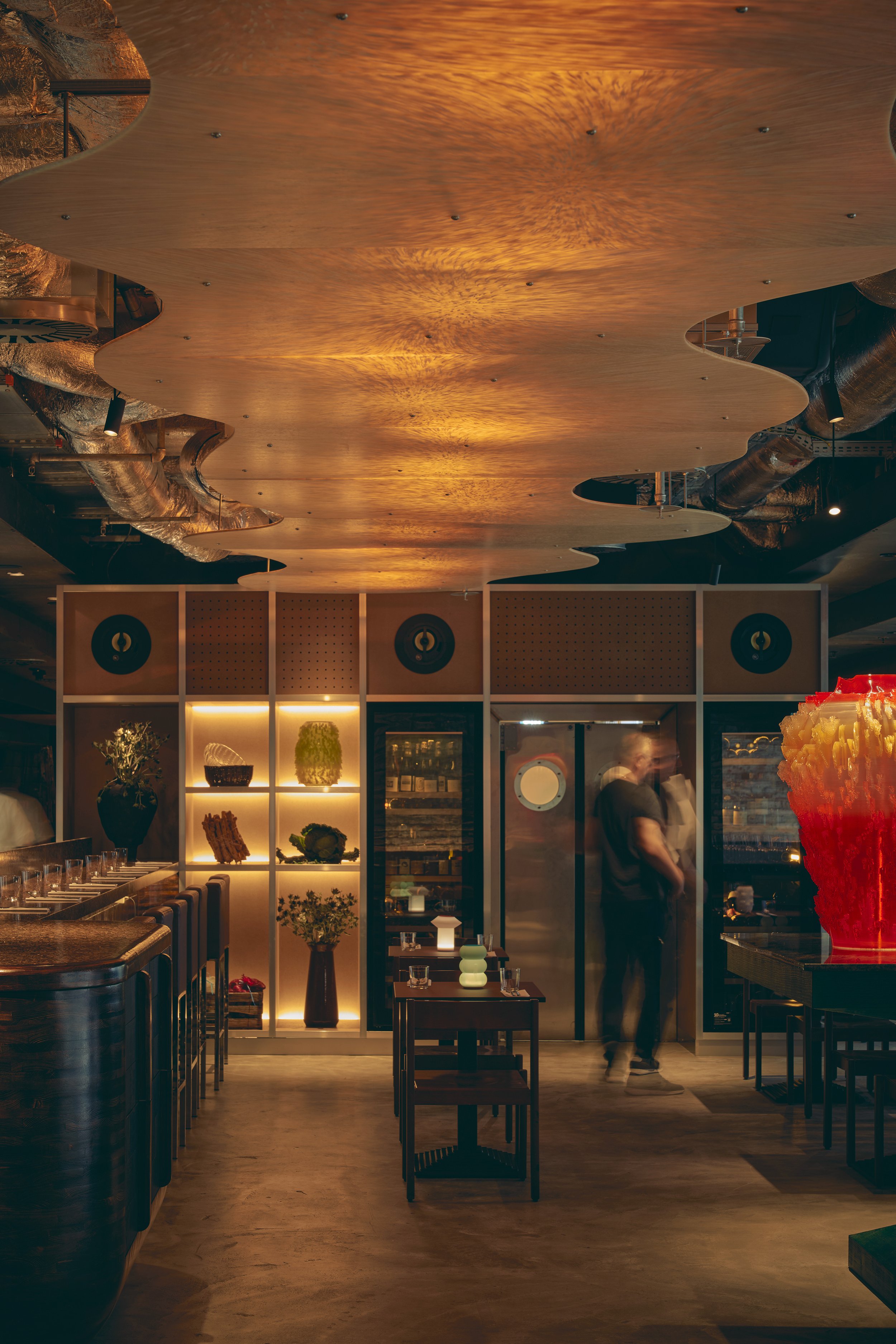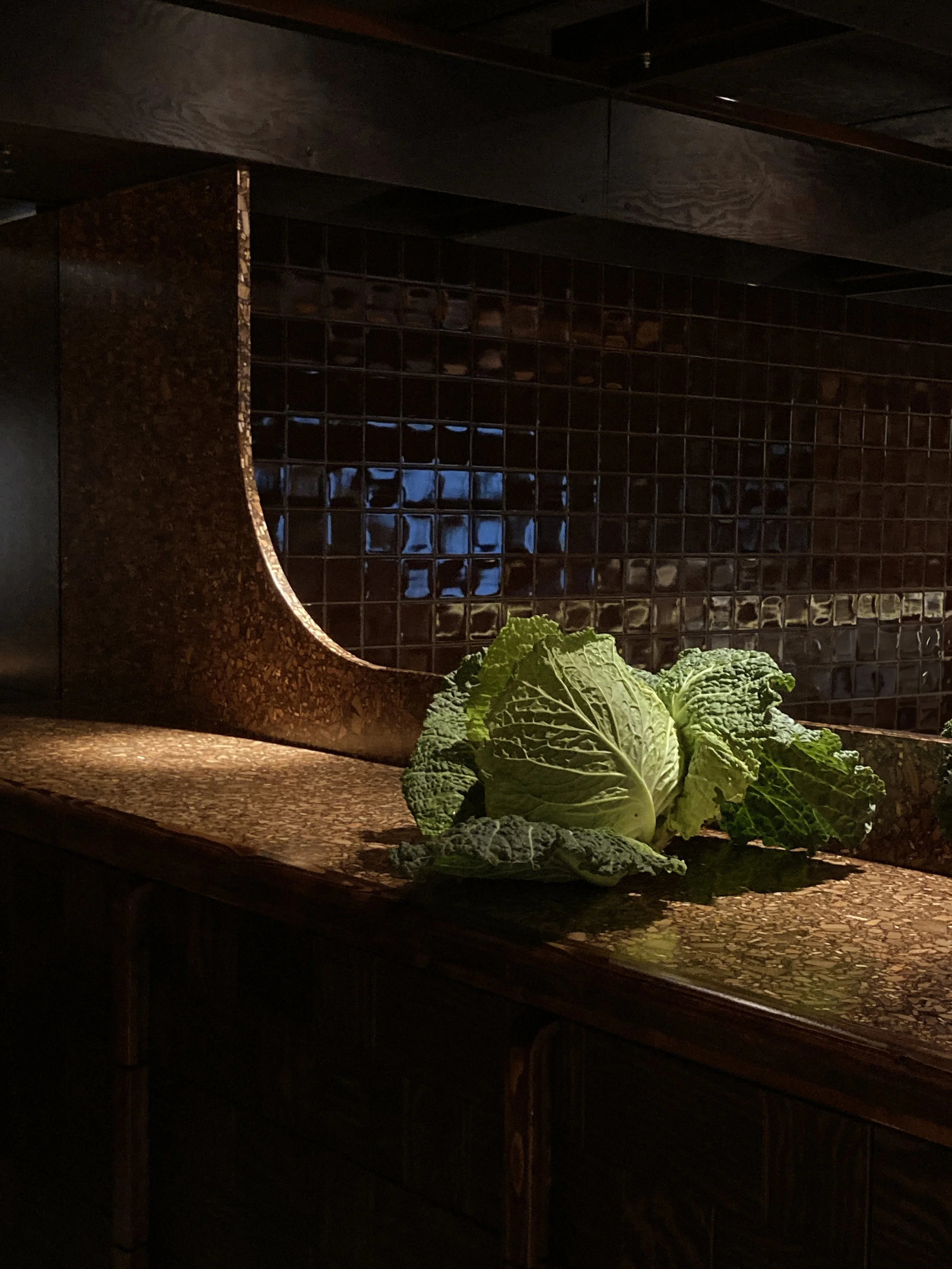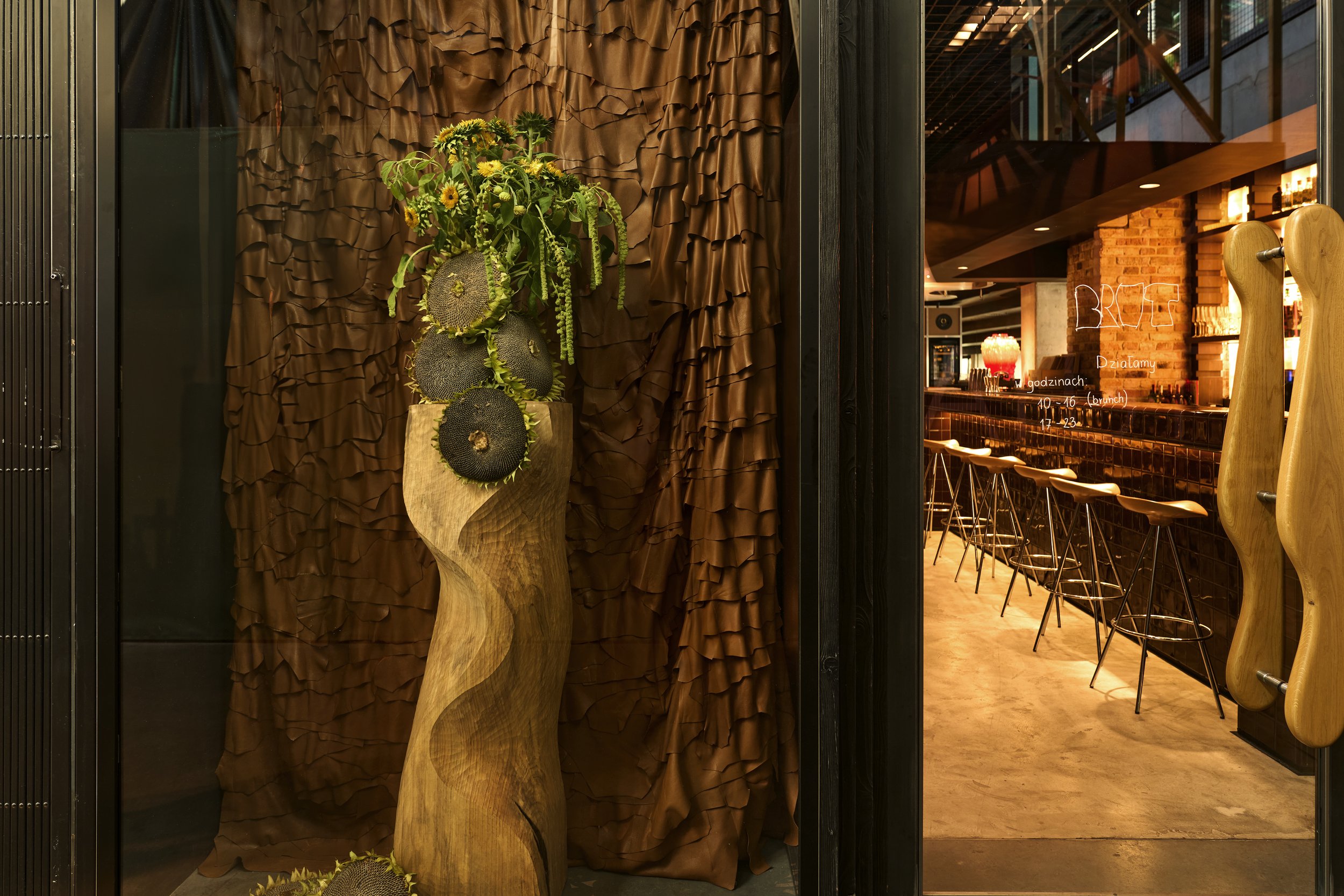
BRUT Restobar by Loskiewicz Studio
Set within Warsaw's historic Hala Koszyki, Brut Restobar by Loskiewicz Studio draws its identity from a dialogue between heritage and contemporary austerity.
The venue occupies a threshold site, bridging the iron-framed market hall and its surrounding office buildings, and channels that adjacency into a refined spatial language of exposed structure, textured surfaces and calibrated light.
Hala Koszyki's longstanding role as a civic marketplace lends the project both weight and flexibility. Loskiewicz Studio approaches the space as an architectural palimpsest, preserving what carries meaning while introducing a clear, modern program. Practical constraints—low-set windows and an exposed HVAC line—inform the interior's geometry and become generative elements rather than compromises.
A ceiling of extruded, inverted steps references Koszyki’s stepped portals, introducing a new topography that is at once futuristic and measured. This sculpted canopy defines a cohesive section, guiding movement and sightlines while lending the room a quietly immersive character. Across the floor, distinct yet connected moments create depth and orientation: an illuminated salt-brick bar, a sculptural metal cloakroom, a communal table anchored by a concrete beam, an open kitchen that animates the interior, and a lowered lounge zone that settles the space.
A green “Crocodile” sommelier station forms a focal point, pairing wine service with a curated display that reads as another spatial layer. Art and object are integrated as wayfinding and atmosphere, deepening the interior’s visual cadence without resorting to ornament.
Material honesty grounds the project. The former bookstore screed is retained and professionally cleaned. Existing services are adapted in place. Chairs, sofas and armchairs are sourced as vintage pieces, lending tactility and provenance. Circularity extends to lighting: a recycled Boomplastic installation and a layered strategy of natural and artificial sources accentuate the ceiling’s relief and enrich the textures under limited daylight conditions.
The palette privileges durability and warmth: concrete, metal, salt brick and soft upholstery tones combine with precise joinery to balance the hall’s brutalist frame. Detailing aims for restraint—edges are crisp, junctions legible—allowing surfaces to do the work of atmosphere. The wine display reads as a luminous plane, the bar as a softly glowing mass, each element contributing without competing.
The interior is planned as a series of interrelated axes, each revealing new alignments as one moves through the space. Dining aligns beneath the stepped ceiling; the bar anchors casual gathering; the lounge offers a lowered, intimate counterpoint; the open kitchen establishes transparency and craft. Together, these components create a hospitality setting that feels both effortless and studied.
Chef Jan Kilański’s kitchen underscores the design ethos. Seasonal produce and direct, technique-led preparations mirror the interior’s clarity—pared back, characterful and accessible. The menu shifts with nature’s cycles, matching the project’s emphasis on authenticity and material presence.
Brut Restobar operates as a contemporary insertion within a historic shell, carving a distinct interior landscape that belongs to its context. By coupling reuse with precise interventions, Loskiewicz Studio delivers a space that is raw yet inviting, measured yet vivid—an architectural narrative attuned to the evolving story of Hala Koszyki.

















